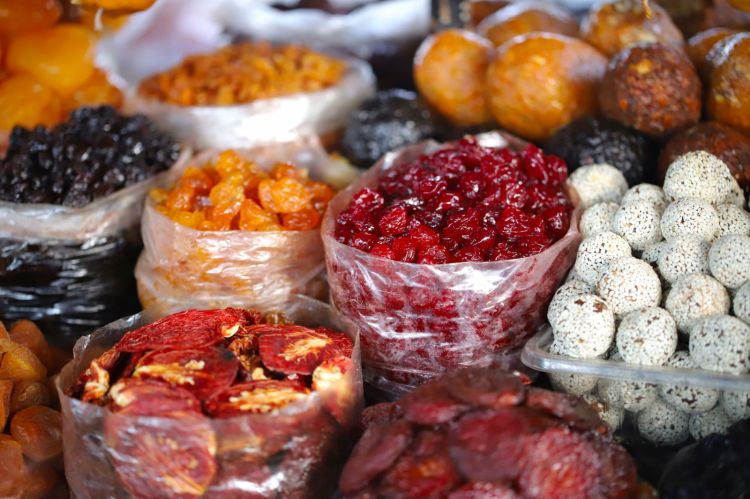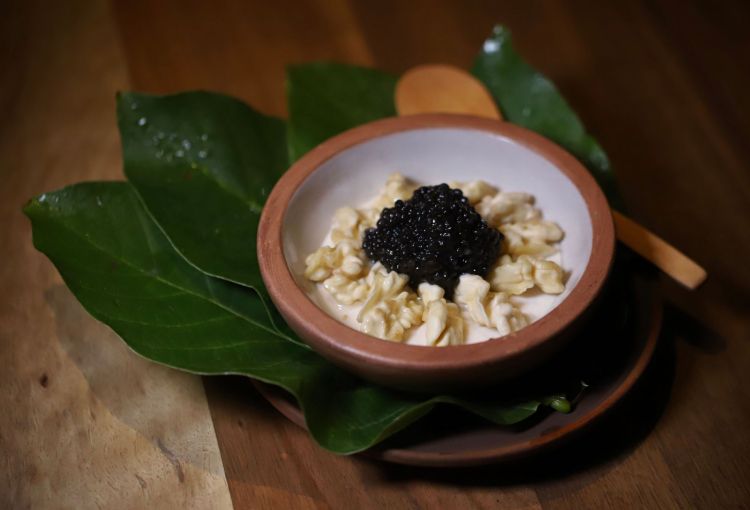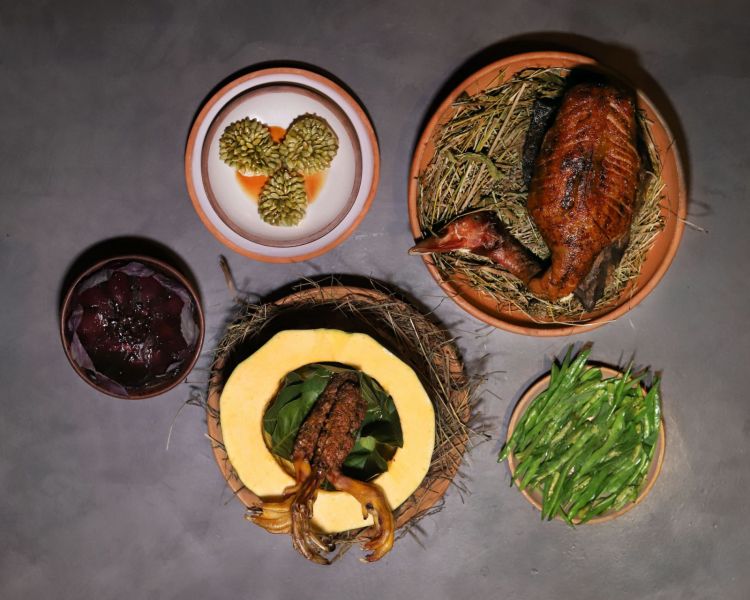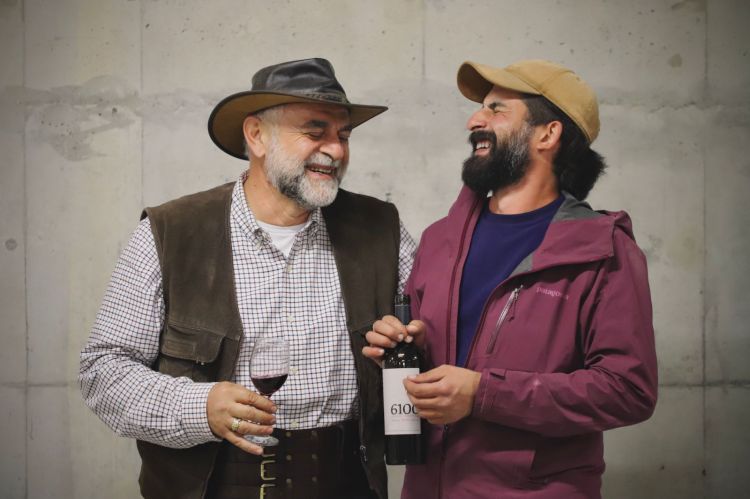28-10-2021
In the Armenian pantry
Food specialties and wines popular in Yerevan and the surroundings. A kaleidoscope of flavours and ancient wisdoms worth discovering

Various dehydrated fruits sold at Gum Market, the covered market in Yerevan, one of the mandatory destinations in Armenia (all photos from David Egui)
For its magic landscapes and monasteries, Armenia is a fairy tale country worth putting at the top of your wish list right away, we were saying. But its food and wines are worth discovering and tasting too.
As often the case with many countries that were under the thumb of the Soviets, the new generations have the desire of giving value to ingredients, recipes and preparations pre and post-USSR (1936-1991) since the culinary basin of Armenia (if you exclude sea fish which is almost absent) is the expression of a microclimate very similar to the Mediterranean one.
The Valley of Ararat is a gigantic basin of vegetables (especially in the spring) and fruits (summer): apricots, even dehydrated, are a sort of national emblem almost as much as the sacred lavash (see photo below). Tomatoes and cucumbers, marvellous in season, are available almost everywhere throughout the year (from greenhouses). In the autumn apples, quince, and persimmon but also cabbage, potatoes, walnuts and other nuts are very popular. Among herbs, parsley, coriander, dill and basil are the most common; as for pomegranates, you can find their grains almost everywhere.
Among the local specialties, there's the ubiquitous trout from Lake Sevan, prepared in all sorts of ways, as well as crayfish (from freshwater as Armenia has no access to the sea). Other popular dishes include dried beef basturma, dolma (fermented cabbage leaves), baklava, lahmajo (a sort of Armenian pizza), chickufta (a sort of steak tartare) and harisa (a delicious type of porridge). The diet is rich in pork, duck, lamb and lots of cheese (usually not mature). The soviet influence is clear in dishes like salat vinaigrette as well as in the common use of the classic trio of potatoes, sour cream and vodka.
Like Georgia, Armenia claims its role as the world cradle of wine. Which one of the two countries first began is a futile argument. For sure, in the Areni cave, there are proofs of rites of cannibalism, with tastings of blood and wine, dating from over 6 thousand years ago. A custom that can be found in ancient paintings, in which heaven is often depicted as a vineyard. In the few wineries we visited, the European wine making style (small and large barrels) prevails on amphoras (which are much more popular in Georgia).
Below, you can find fragments and protagonists of an intense 3-day trip. The Armenian pantry would deserve a much deeper exploration.

If we were to pick an emblematic ingredient for this country, for sure it would be lavash, which literally means "loaf of bread", a rather popular specialty even in the surrounding countries: Iran, Turkey, Azerbaijan and Georgia. Of the flatbreads family (flour, water, sunflower seeds and salt), lavash can be used in hundreds of recipes. For this reason, it's been included in the World Heritage list by UNESCO. Kate Leahy, John Lee and Ara Zada have dedicated a beautiful book on Armenian gastronomy to it: "Lavash" published by Chronicle Books. To see how it's cooked, there's a nice video on youtube

A Dilijan, in the north, there's Arm Food Lab, a small lab that is trying to interpret popular food in a future perspective. It develops a constant dialogue with generations of young cooks, who can't wait to give a new appearance to gastronomic tradition

There's a high percentage of women at the helm of the kitchen: in this case it's Sussana Ghukasyan, chef at Tsaghkunk in Sevan, an hour's drive from the capital

The most typical cooking technique is tonir, a clay oven perched in the ground. There are endless products that can be cooked inside. Firstly, lavash as the Armenians say "this bread is our second God "

Various spices at Gum Market in Yerevan. Among the most popular in Armenian homes: black pepper and paprika, used in all sorts of food. Juniper berries and bay leaves are also very popular

Jirair Avanian, patron at restaurant-inn Im Toon in Dilijan, opened recently. "When I left my country in the 1964 diaspora to get to the United States", he said, "nobody drank vodka in Armenia. Today everyone does". Specialties in his restaurant: lots of lovely entrées served before the classic trout from Lake Sevan

In Vagharshapat, in the outskirts of Yerevan, there's an interesting cultural centre/restaurant called Machanents House, that serves a lovely often vegetable-based cuisine. They also cook trout on satellite antennas: they put them in glass pots to warm the juice, with some walnuts. They are ready in a few minutes as a result of the mirrors' reflection

On the last day of our stay in Armenia, at restaurant Tsaghkunk they served a special dinner. Cooking with the local team was Mads Redsflund (famous for having been one of the cofounders of Noma in Copenhagen, with Rene Redzepi and Claus Meyer). The Danish cook spent 3 weeks in Armenia, interpreting the magnificent local ingredients through Nordic techniques and aesthetics. An important preview of the fine dining future that could soon become popular here too

First course of the Nordic-Armenian dinner: Caviar with walnuts from the village of Garni, crème fraiche, aged beefsteak tartare, Saint Georges mushrooms from Dilijan and strawberries

Tomatoes from the Ararat Valley have nothing to envy to the Italian ones: Reflunds cooked the heirloom tomato variety in three textures (the one on the right was a sponge you had to squeeze) with sour plums and dog rose

Another photo from Reflsund's dinner: trout from Lake Sevan baked in beech bark

The climax of the night: bottom right, Armevir duck cooked in a whole piece under the earth, caramelised in a juice of pumpkin and sea buckthorn

The bucolic view from Old Bridge Winery, the family-run b&b and winery founded some twenty years ago in Yeghegnazdor, a region in the spectacular south Armenia. Vineyards are located at 1300 metres above sea level. Many wines age in small Caucasian oak barrels. The most important grape in the country is the dark-berried Areni Noir

A selection of wines from Trinity Wine, a spectacular winery established near the Canyon on the plateau of Vayots Dzor, a region where the first testimony of wine production dates back to over 6 thousand years ago. In the middle of various orthodox wines, we particularly appreciated the only one macerated on the peel and vinified in amphorae. It's called Voskehat Ancestors' (second from the left), from local Voskehat grapes

Hovakim Saghatelyan and Artem Parseghyan, respectively owner and oenologist at Trinity wines
Translated into English by Slawka G. Scarso
Zanattamente buono
Gabriele Zanatta’s opinion: on establishments, chefs and trends in Italy and the world
born in Milan, 1973, freelance journalist, coordinator of Identità Golose World restaurant guidebook since 2007, he is a contributor for several magazines and teaches History of gastronomy and Culinary global trends into universities and institutes. Author of "Cracco in Galleria" (Phaidon e L'ippocampo) and "Contemporary Milanese Cooking" (Guido Tommasi). Instagram @gabrielezanatt
Author's articles list